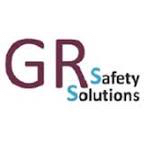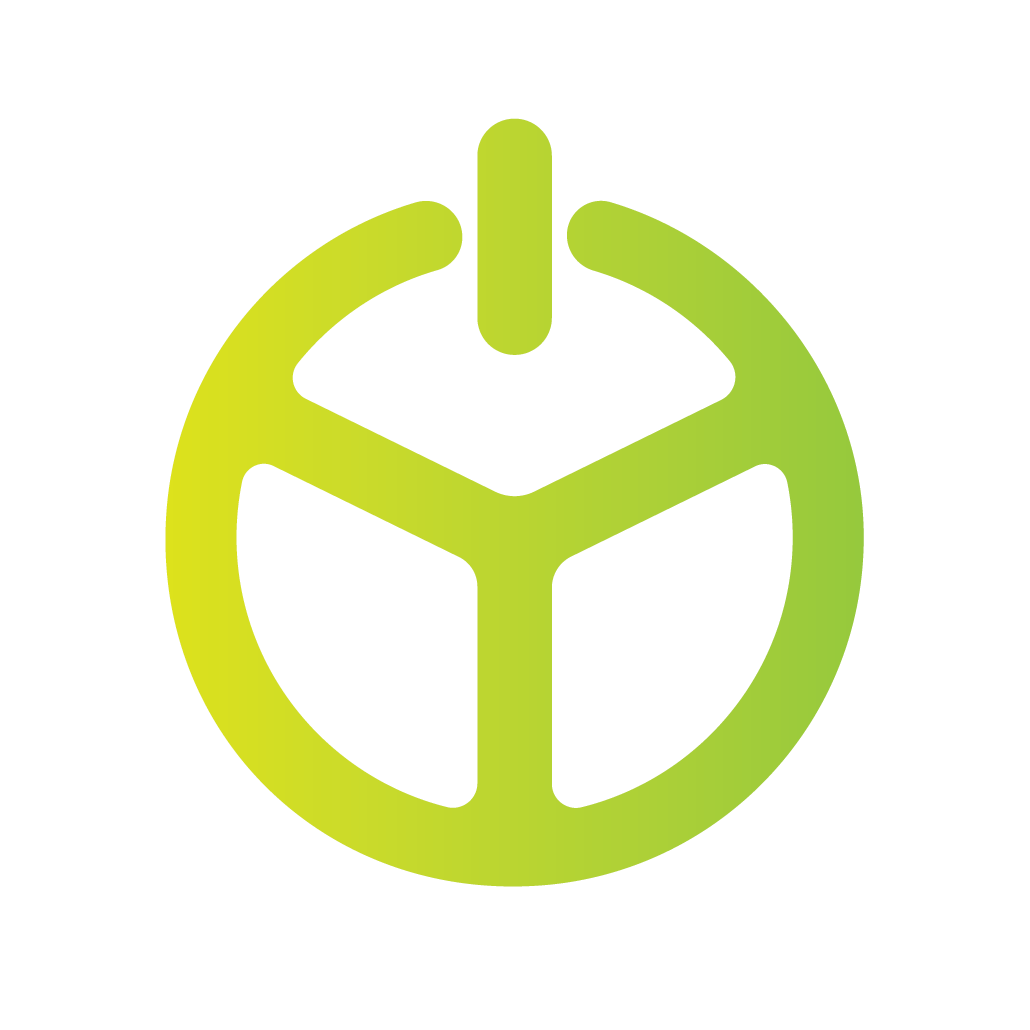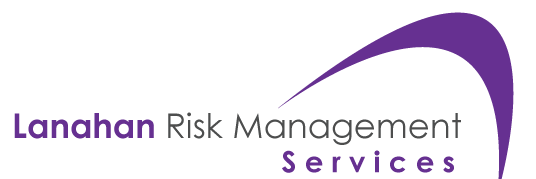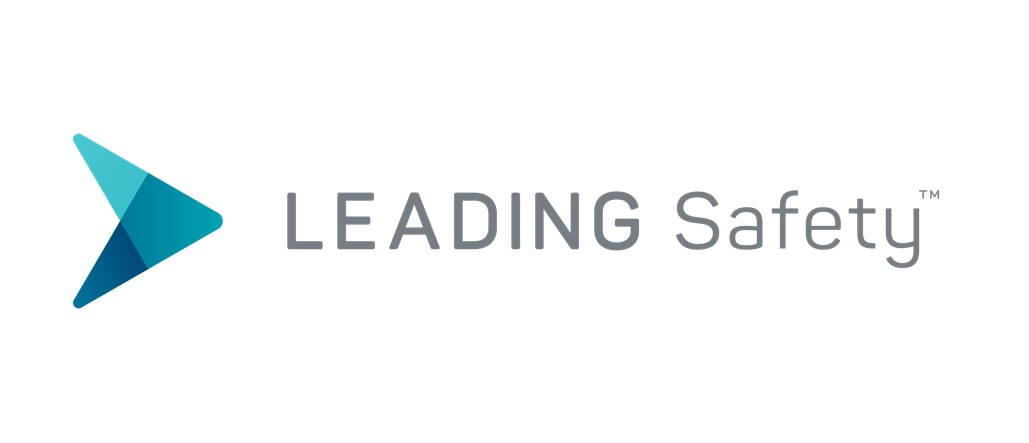Title Page
-
Site conducted
-
Insured
-
Policy Number
-
Insured Contact
-
Insured Email Address
-
Underwriter
-
Underwriter Email
-
Agent
-
Agent Email
-
Inspection Location
-
Conducted on
-
Prepared by
Summary of Operations
-
undefined
1. Investigation of Occurrences
Investigation Form
-
The company has a form for investigating all injury/damage related occurences.
-
There are accompanying instructions for proper completion of investigation forms.
-
The form contains or there is separate documentation for interviewing witnesses.
-
Root cause/safety alerts are developed afterward for distribution to employees.
Investigation Accountability and Training
-
The company defines responsibility for investigation of occurrences and close calls.
-
All supervisors are held accountable for participating in investigations.
-
Training is held on the value and completion of investigations.
-
Agenda includes techniques for fact finding, interviewing, and reconstruction.
-
Training is held on preserving evidence and taking pictures at the scene.
Investigation Reports and Analysis
-
Investigation reports are filed within an average of 24 hours after the accident/incident.
-
Reviews are initialized within 3 business days after reports are filed.
-
Reviews clearly display the use of root cause analysis.
-
Reviews attempt to identify at least one corrective action.
-
Reviews attempt to identify subrogation opportunities.
Corrective Actions
-
Minimal time frames have been established for corrective actions.
-
Corrective actions have been implemented.
-
Implemented corrective actions are evaluated for effectiveness.
-
Supervisors have the authority to immediately implement and monitor corrective actions.
2. Claims Management
Injury/Illness Assessment and Medical Care
-
The company reports every claim.
-
Someone in-house can determine when to send an employee for further medical evaluation.
-
Care is provided at time of reported injury.
Claims Reporting and Coordination
-
The company has a procedure for reporting claims immediately upon notification.
-
The company has a designated claims coordinator.
-
The claims coordinator has knowledge of special claims procedures (i.e., hot claims).
-
Personnel at all locations prepared to document and report occurrences to corporate or home office location.
Transitional Duty/Return to Work
-
A designated Medical Provider Network is utilized.
-
The company has implemented modified work tasks for employees injured in the past year.
-
There is a procedure for contacting employees while they are away from work.
-
The company has a formal return to work program.
Loss Review
-
There is satisfactory communication between the claims adjuster and the claims contact.
-
Loss information is communicated to key company personnel.
-
Claim reviews are scheduled as needed.
-
Monthly loss runs are reviewed.
3. OSHA Frequency and Severity
OSHA Recordkeeping
-
The most current version of the OSHA forms are used.
-
OSHA 300A Summary(is) recordkeeping is accurate.
-
OSHA 300 A Summary(is) are posted between February 1st and April 30th of each year.
-
Recordkeeper(s) have demonstrated proficiency in OSHA recordkeeping.
Target/Problem Loss Areas and Tasks
-
Target/problem loss areas have been identified for each work location.
-
Safe work procedures have been developed for some target/problem loss areas.
-
Location surveys include a focus on these target/problem areas.
-
Supervisor/employee communication program has been implemented to provide more focus.
4. Risk Transfer
Certificates of Insurance
-
The company requires certificates of insurance.
-
The company tracks and updates most certificates of insurance annually.
-
The company has established minimally acceptable coverage and limit standards.
-
The company reviews coverage endorsements.
-
Ratings and admittance status of each insurance company is closely monitored.
-
The company is protected when doing business with non-domestic suppliers.
-
Certificates are stored so they are easily retrievable when needed.
-
The company utilizes 1099 employees.
-
The company leases employees.
-
The company uses a temp agency.
Contractual Agreements/Indemnification
-
The company reviews contracts for indemnification and hold harmless provisions.
-
Agreements are stored so they are easily retrievable when needed.
-
The company includes provisions on purchase orders and sales invoices.
-
Authorized company personnel are aware of these provisions and cannot be simply altered.
5. Loss Prevention and Organizational Commitment
Safety Policy Statement
-
The company has a Safety policy statement.
-
The Safety policy statement is released to all employees. Employees sign an acknowledgment form.
-
The Safety policy statement is part of other Safety documents and is properly posted.
-
The Safety policy statement is signed by senior management.
-
The Safety policy statement is reviewed annually.
Safety Manual/ Policies/ Procedures
-
The company has a written Injury and Illness Prevention Program (IIPP) or other written safety manual.
-
The company will implement a written safety manual.
-
The Safety manual is up-to-date and is made available to all employees.
-
Update and Distribute updated IIPP
-
The Safety manual contains at least the following sections: Safety policy statement, Safety training section, General Safety rules, Safety committee, Accident investigation, and Required Recordkeeping.
-
The Safety manual contains required Safety programs.
-
The Safety manual contains Hazard Survey/Correction and Job Safety Analysis.
-
Each section has a person responsible and/or competent person. The Safety manual's last reviewed date was within the last year.
Supervisor Responsibility and Accountability
-
Supervisors have a job description with Safety responsibilities displayed.
-
Supervisors are held accountable and sign an acknowledgement form.
-
Supervisor receives an annual performance review, including Safety performance.
Employee Responsibility and Accountability
-
Employees have job Safety responsibilities and accountabilities.
-
Employees sign an acknowledgment form.
-
Employees clearly understand how to report unsafe acts and conditions.
-
Employees are empowered to stop work if unsafe conditions or actions are identified.
-
Employees receive an annual performance review, including Safety performance and promotion.
Hazard Reporting System
-
A system for hazard reporting exists and the system has been used.
-
Supervisors have a procedure for evaluating and responding to hazard reports.
-
Employees receive periodic instruction in hazard identification and reporting.
-
Management conducts surveys of employee observations to ensure system performance.
-
Management respond to reports in writing or in person.
Employee Participation and Recognition
-
Employees may participate freely in Safety and health activities.
-
Employees are involved in inspections and permitted to observe monitoring and receive results.
-
Employees participate in workplace analysis, investigations, and development of control strategies.
-
Employees participate in audits and program reviews conducted by management and third parties.
-
The company recognizes employees for achievement and promotion of Safe operations. (Safety Incentive Program)
Action Plan
-
The company has an Action Plan for reducing claim frequency or related critical exposure.
-
The loss prevention consultant assisted with the development of the Action Plan.
-
A clear goal with related action items was stated.
-
A true leading indicator for measuring progress towards the goal was formulated.
-
Senior management approved the Action Plan.
Safety Director
-
The company has a Safety Director/Coordinator.
-
Are they Full Time or Part Time?
-
Name:
-
The Safety Director reports directly to senior management on Safety and health issues.
-
The Safety Director has designations/certifications from attending workshops, seminars, and classes.
-
The Safety Director is empowered to stop work if unsafe conditions/practices are observed.
Safety Committee
-
The company has an active Safety Committee.
-
The Safety Committee is active as follows: meets regularly (minimum every 4-8 weeks), has meeting agendas, and records meeting minutes.
-
The Safety Committee is further active as follows: conducts regular inspections of the facility or jobs, reviews close-call incidents, and makes recommendations to management for loss prevention.
-
Senior management (owner, president, etc.) attends meetings.
Job Safety Analysis (JSA)
-
The company has a Job Safety Analysis (JSA) program.
-
The JSA program consists of the following steps: exposure to hazard analysis, complete SOP's, Safety precaution list, JSA's posted near work stations/areas, training has been provided for all affected workers.
Disciplinary Action
-
The company has a procedure for Safety program violations.
-
Training is provided for all supervisors in the use of the procedure.
-
Application of the procedure is uniform for all personnel.
-
Violation analysis takes place to determine root cause.
Accountability Company Subdivisions
-
The company does a regular loss analysis of satellite locations, departments, etc.
-
Frequency/severity/loss experience are shared with subdivision heads.
-
Plans for improvement with timelines are required of subdivisions with high frequency/experience.
-
Methods like charge-backs, bonuses, consultant concentration are utilized by the company.
Orientation and Training
-
The company has a formal employee Safety orientation.
-
Orientation is given to all new hires, transfers, and temporary employees.
-
Managers/supervisors attend training provided to employees under their direction.
-
Test/exercises are used and past scores and training records are easily retrievable.
-
Computer/web-based training modules and recordkeeping system is used.
-
New employees receive job training.
Employee Benefits
-
All employees receive paid sick hours.
-
All employees receive paid vacation.
-
All employees are provided group health insurance.
-
What percentage participate?
-
Who is eligible?
-
Any additional employee benefits offered?
-
What kind?
6. COVID -19 Safety Program
Working from home.
-
Employees who are able to work remotely are doing so.
-
How many employees?
-
Who is working remotely?
Physical Distancing
-
Notices are up around the workplace advising to keep at least 6 feet between employees.
-
Put up notices
-
Work stations have been moved to allow physical distancing.
-
If not able to move workstations are plexiglass barriers used.
-
Common areas such as break rooms do not allow for multiple employees to gather.
Handwashing and Hygiene
-
Hand sanitizer stations are set up around the workplace including at all entry and exit points.
-
Bathrooms are well stocked with paper towels and soap.
-
Posters with handwashing instructions are at every handwashing station.
Cleaning
-
Areas frequented by workers/others are cleaned at least daily with disenfectant.
-
Frequently touched surface areas are disinfected several times a day. Eg. Tools, door knobs etc
Monitor Symptoms/
-
Daily temperature checks upon arrival.
-
Designated COVID-19 supervisor/contact.
-
Who?
-
Written COVID-19 management plan.
-
Establish written COVID-19 Safety Plan
-
Employees who show symptoms are advised to stay home and quarantine.
-
Employees are notified of possible exposure.
-
Masks are worn at all times.
7. Driving Exposure
-
Driving Exposure?
-
Driving Radius
-
Driving Frequency
-
Nature of driving exposure.
Driver Quality Assurance
-
The company has a policy for screening employee drivers.
-
The company checks MVR's prior to hiring people who may drive for company business.
-
The company has an established procedure for reviewing MVR's
-
The company has a driver road test (behind the wheel) program in place.
-
The company has a driver check ride (behind the wheel) program in place.
-
The minimum age of new drivers is 21 years or older.
-
New drivers have three or fewer moving violations in the past three years.
-
Maximum of one serious moving violation in the past five years.
-
Does not allow operation of a company vehicle prior to a negative drug screen.
-
Maximum of three at-fault accidents in three years.
Vehicle Safety Procedures
-
Company vehicles used
-
Are company vehicles taken home?
-
Accident report forms and proof of insurance cards are provided in all company vehicles.
-
There is a procedure in case of vehicle breakdown.
-
Cameras are available in vehicles (driver cell, PDA) for accident documentation purposes.
-
The company has vehicle Safety procedures that are communicated to employees.
-
Drivers receive instruction on what photos to take or not take at the occurrence scene.
-
The company has a formal vehicle selection and maintenance program.
-
Group Transportation - 5 or more employees per vehicle.
-
Max employees allowed to travel per vehicle.
-
Percentage of driving exposure with 5 or more employees?
-
Radius of driving exposure with 5 or more employees.
Driver Training
-
The company provides driver improvement training.
-
The company has a distracted driving policy.
-
The driver improvement training includes the following topics; backing, intersections, speed and following distance, lane change and merging, night driving, and inclement weather.
-
The driver improvement training includes policies and procedures for; distraction and cell phone use and road rage.
-
Computer/web-based training modules and recordkeeping system is used.
Use of Personal Vehicles
-
The company allows use of personal vehicles.
-
The company has a policy for personal use of vehicles on company business.
-
An inspection checklist is furnished to drivers to help maintain their vehicles.
-
Drivers carry personal auto insurance that meets or exceeds state minimum requirements.
-
Employee drivers have received training on vehicle Safety.
8. Ergonomics
Equipment
-
The company has a process that includes workstation assessment and medical management.
-
Workstations are assessed after an employee complaint or an injury/illness occurs.
-
An ergonomic team; has been established, has been trained and selects workstations based on the risk presented.
-
Management and associates have been trained on basic ergonomic concepts.
Engineering Controls
-
The company considers size and weight during the selection of materials.
-
Material handling is considered important because the company; has established defined material handling weights, has considered injury potential/cost in determining packaging weight, and provides alternative shaped containers or containers with handles.
-
There are successes in reducing ergonomic exposures from material handling.
Soft Tissue Injury Prevention
-
The company trains on safe lifting, material handling, and out of position tasks.
-
The company provides ergonomic guidelines for layout and staging areas.
-
Tasks, equipment, etc. are identified in advance requiring two-person or machine-assisted lifts.
-
Job pre-planning/scheduling process identifies methods and procedures for injury prevention.
9. Regulatory Compliance
Machine Safeguarding
-
The company has a machine safeguarding policy.
-
The machine safeguarding policy contains the following; purchasing standards for new equipment and new equipment inspection and placement into service.
-
The machine safeguarding policy further contains the following; regular inspection procedure and training for equipment operators.
-
All machines and tools are safeguarded to OSHA standards.
Powered Industrial Trucks
-
The company has a powered industrial truck Safety program.
-
Performance of operators is evaluated at least every three years.
-
All operators are properly trained.
-
Industrial trucks are operated in a Safe manner.
-
Operators receive refresher training after an accident or unsafe operations.
Walking and Working Surfaces
-
Walking and work surfaces is included on inspection checklist.
-
Ladders are maintained and stored properly.
-
Steps and stairways comply with handrail standards.
-
Elevated platforms comply with OSHA standards.
-
Walkways are free and clear of storage and clutter.
Electrical Safety
-
The company has an electrical Safety policy and procedure(s).
-
Existing electrical Safety conditions include the following; junction boxes/electrical boxes and fittings are covered, flex cords and temporary wiring is not used as permanent wiring, and GFCI's are provided during construction, maintenance, repair, tasks, etc.
-
Existing electrical Safety conditions further include; only authorized/trained personnel access electrical panels and controls, electrical panels/breakers are properly labeled, and electrical utility rooms are posted "Authorized Personnel Only" and secured.
Control of Hazardous Energy
-
The company has a lockout/tagout program.
-
There are procedures for equipment with multiple power sources.
-
There is an equipment inventory with definitions of power sources for each piece.
-
Lockout/tagout readiness includes the following; authorized/affected associates have been trained according to the standard, a list of authorized associates is maintained, and lockout/tagout procedures are assessed annually and certified.
-
Lockout/tagout readiness further includes; group lockout and lockout/tagout procedures are reviewed with outside contractors.
Crane, Hoist, and Rigging Equipment
-
The company has a program for crane, hoist, and rigging equipment.
-
An exposure inventory has been taken of all applicable equipment.
-
Load capacity ratings are clearly marked.
Confined Space Entry
-
The company has a confined space entry program.
-
An exposure inventory has been taken and all confined spaces have been marked.
-
Confined space entry Safety includes; worker training as required by the standard, entry equipment is maintained and ready, rescue has been reviewed and outside or inside teams has been determined, and training has been completed at the actual confined spaces.
-
A permit procedure has been established and is used consistently.
Personal Protective Equipment
-
A personal protective equipment hazard assessment has been completed.
-
Personal protective equipment requirements are defined on all job tasks.
-
PPE procedures include; workers are trained on the proper use and maintenance of PPE, PPE use is strictly enforced, and most workers are offered different options on PPE.
-
Types of PPE used.
Fall Protection Program
-
The company has a fall protection program in place.
-
Type of fall protection
-
Height fall protection is required at in feet.
-
Max height exposure.
-
Fall Protection is keep in good working order.
Exposure Monitoring/ Industrial Hygiene
-
The company has an industrial hygiene monitoring process.
-
Periodic monitoring is performed on a scheduled basis.
-
Basic IH sampling has taken place and is performed when operations of conditions change.
-
The IH process includes; a monitoring plan that is reviewed and updated annually, affected workers are informed of test results, and engineering controls are utilized to reduce exposure.
Hearing Conservation
-
The company has a hearing conservation program.
-
The compliance features further include; workers receiving hearing conservation training on an annual basis, enforcement of hearing protection use.
-
Employees are notified of STS shifts of 10 db. or greater within 21 days.
-
The compliance features include; an annual review and update, audiometric testing is performed on a pre-placement and annual basis, noise sampling has defined noise levels through the facility, and warning signs are posted.
Respiratory Protection
-
The company has a respiratory protection program.
-
Engineering controls are utilized to reduce exposure.
-
The compliance features include; workers annually trained on proper use, fit, cleaning and storage of respirators, and respirator fit testing.
-
Health evaluations/medical surveillance performed on a pre-placement and annual basis.
Hazard Communication
-
The company has a hazard communication program.
-
The compliance features include; annual updating, SDS are immediately available to associates, employees have been trained on GHS and chemicals related to their jobs.
-
A chemical inventory is complete and updated annually.
-
The compliance features further include; new chemical introduction and SDS management protocol, and SDS are retained and available for 30 years after use.
Bloodborne Pathogens
-
The company has a bloodborne pathogens (BBP) program.
-
Implement a BBP Program
-
A BBP exposure evaluation has been completed.
-
The compliance features include; universal precautions are standard protocols for all bloodborne exposures, employees routinely exposed to BBP have been trained per the standard, and the program is reviewed and updated annually.
-
The compliance features further include; exposure control that is provided and accessible, janitorial service workers have been trained, and post-exposure evaluations are completed per the standard.
Fire Safety
-
Fire Extinguishers have current inspection tag and no more than 12 months since inspection.
-
Fire Extinguishers are easily accessed and proper clearance is maintained.
-
Evacuation plans are available and up to date.
-
Fire drill was conducted within the last 12 months.
First Aid
-
First Aid Kit's are available.
-
The basic supplies are fully stocked and not expired.
-
Staff members are trained and certified in both first aid and CPR.
-
Emergency eyewash station is available.
10. Media
Media
-
Add media
-
Add media
-
Add media
-
Add media
-
Add media
-
Add media
-
Add media
-
Add media
-
Add media
-
Add media










